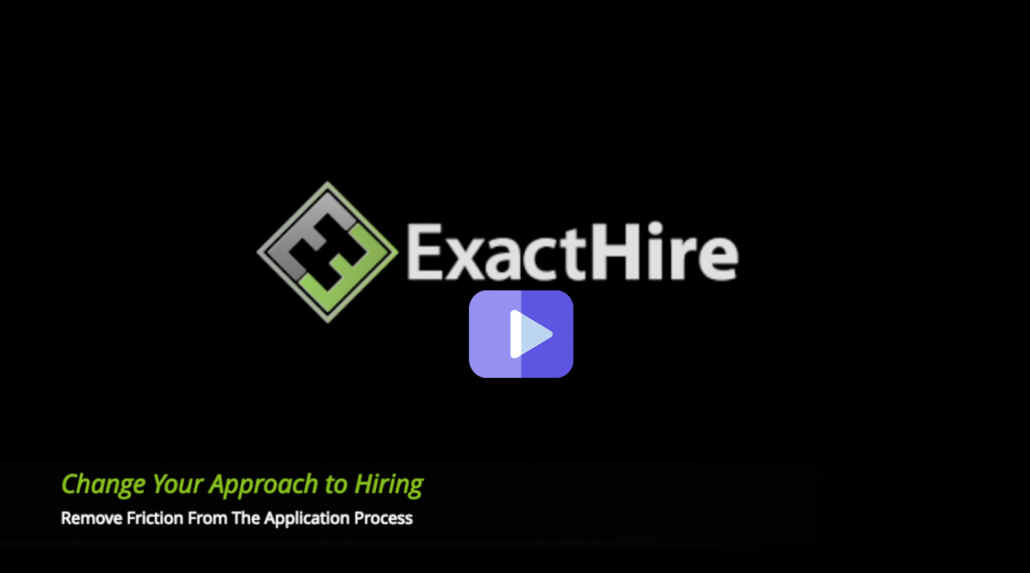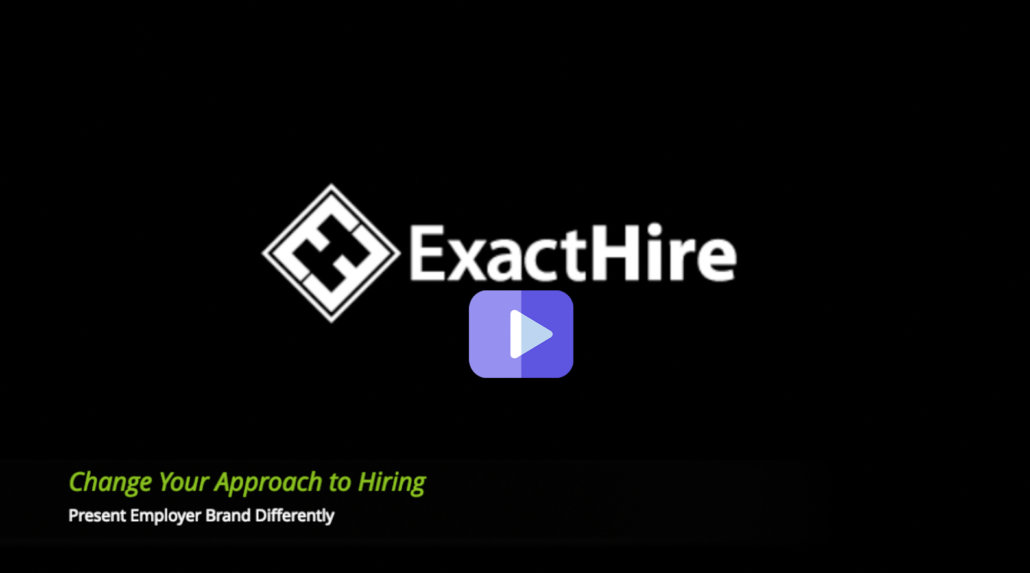When to invest in an Applicant Tracking System
Small business owners champion the definition of the “entrepreneurial spirit”. They are resourceful, intuitive and resilient. They are wise to know that success is built and maintained upon the formulation of a cohesive, talented team. Finding employees who integrate fully into the small business culture can be a challenge.
Organizations of all sizes are fiercely competing for prime talent. While big businesses might be more flashy and visible with offerings to attract talent, small businesses can successfully compete. To yield the best talent, small businesses need to demonstrate what all they have to offer. They can do this through a unique, personalized employee value proposition.
When small businesses boldly communicate exciting duties, growth opportunities and a welcoming, inclusive culture, that message will resonate loudly to applicants. Applicant tracking systems allow you to complete this in an effective way.
How do I hire the best employee for my small business?
As a small business’s needs evolve, it is important for the owner and leaders to assess hiring needs first. Identify the specific knowledge and skill set(s) missing for increased productivity. Analyzing which skills are sought, and where there is room for growth, allows decision makers to accurately identify the role(s) needed. While small business leaders often explore internal talent to determine if anyone else can assume extra duties, it is crucial to first discuss assigning extra responsibilities with employees in order to acquire their feedback and determine the risk of burnout. Overwhelming current employees with additional responsibilities can lead to turnover, and small businesses cannot afford to lose contributing talent.
Once small business leaders have identified the need to hire, examine what kind of employee will best meet the company’s needs. Is the best fit for the company a full-time employee with benefits (most expensive)? A part-time employee less than 30 hours weekly without benefits (not as expensive)? Or an independent contractor who does not utilize benefits or training (least expensive)? Comparing projected income and costs between these classifications will help identify the type and number of employees a company can afford to hire.
How do I get employees for my small business?
Filling vacancies is a fiercely competitive challenge in the current market. Employers of all sizes are increasing pay hoping to attract employees. This puts more of a challenge on small businesses whose budgets are tighter. While it is important to keep salaries in alignment with market rates, money is not everything. Offering a quality benefits package helps. Consider including employee perks such as flexible and/or remote schedule. Unlimited or enhanced time off andvolunteer opportunities during the workday help too. Fitness opportunities, and a casual dress code to attract additional interest can help sway candidates to your company too. Professional development opportunities? Yes, please!
Any opportunity for additional skills development or professional certification is a motivator. It is also an investment in employees that funnels back into the company. Adding unique perks positions a small business to stand out from other businesses. Additionally, it shows a commitment to employees’ social, mental and physical wellbeing. Promote benefits and perks online and in job listings. Small businesses tend to have a close-knit culture. Highlight team activities on the company’s website and social media channels so applicants can view the fun.
Job descriptions are often the first impression of a company to a jobseeker so it is crucial that those descriptions are magnetizing. Pinpoint particular skills in the job description. So the applicant has an accurate idea of daily duties, list realistic and specific job responsibilities. While it is important to give a thorough description, too much information is overwhelming. Keep the info amount to what is expected for daily performance.
How much money do you need to hire an employee?
According to LinkedIn, small businesses spend an average of $1,600 annually on hiring. That money is often spent on direct job postings and manual efforts by hiring personnel. Small businesses seek to utilize Applicant Tracking Software (ATS) to streamline the hiring process by automating numerous manual functions. Time saved by using an ATS provides small business leaders a way to spend more time on strategic functions and addressing small businesses’ needs.
If business is slower during a specific time frame, use that off-peak time for ATS purchasing and implementation. Evaluate ATS features thoroughly, and work with the provider’s support team to use the tool efficiently to solve the unique needs of a small business. Having a resourceful ATS support team receptive to questions will favorably enhance ATS users’ experience. With the end of the year rapidly approaching, small business leaders need to consider using available budget funds to invest in an ATS to start the new year with increased simplicity, organization and efficiency.
What features do Applicant Tracking System’s possess that help small businesses?
Often, small business employees juggle many different roles. Human Resources, Marketing, Training…the list goes on. Time management is the name of the game in small business life, so when options exist to automate functions, it not only saves time but also money. An applicant tracking system redefines internal organization. Using an ATS eliminates file folders of confidential material helping to support recruitment compliance objectives.
An applicant tracking system can securely house data, and decision makers can customize access levels of the platform. Jobseekers are constantly on the go so having an applicant tracking system that offers texting helps reach individuals quicker in a fast-paced world. Job searching needs to be mobile friendly so an applicant tracking system must have the capabilities to be navigable on mobile devices. QR codes offer quick ways for applicants to apply. For employees and jobseekers on-the-go, an ATS delivers information within a few clicks anywhere and everywhere. Complete convenience for everyone involved in the recruitment process.
What needs does a small business have that an Applicant Tracking System would solve?
An applicant tracking system provides a buffet of job board options to meet small businesses’ needs and enhance visibility. Integrating with major job boards to automate the job posting process saves time and money for a small business. Use social media sites, niche job boards, and state job boards offered within an ATS to reach an expanded audience. An ATS offering the ability to filter applicants through screening questions and disqualification filters eliminate unqualified applicants, saving time in the screening process. For small businesses subject to EEO/AAP reporting, an ATS will simplify reporting as data is collected electronically and securely stored.
How do I hire the best talent?
As small business leaders examine applicant data, ideally using an ATS, examine the applicants’ data closely. Rate and rank preferred applicants based on qualifications for the role. Interview those top candidates who show a sincere desire to work in the small business culture. Bring finalists back for a group interview to gauge soft skills.
Upon conclusion of the group discussion, make a decision based on qualifications and feedback. Do not delay in offering the position to the first choice applicant as that person might be enticed by a different employer. After the role is filled, ensure that all applicants have received some form of communication letting them know they were not selected. Receiving an update, even if a rejection, gives applicants a sense of closure. Explore the use of mass communication options within an ATS when sending a rejection or other forms of communication.
As small business leaders journey through the hiring process, collect data and evaluate the process. Setting benchmarks and using data to identify success points and areas for improvement will make the next hiring process easier and less expensive. A robust ATS will offer automation and reporting tools to assist small business leaders analyze metrics such as time to fill and time to hire and identify the source of applicants. Having the ability to create unique reports within an ATS to track measurable data is essential in strategic planning.
Talent sourcing for small business can seem like a daunting task, but finding the right ATS for small business will make the hiring process easier. Using an ATS to automate tasks will close existing gaps in a manual hiring process improving productivity and enhancing the company’s brand. An ATS is an investment that will increase a small business’s competitive edge against large companies when recruiting stellar talent
Photo by Startupstockphotos on Pixabay


